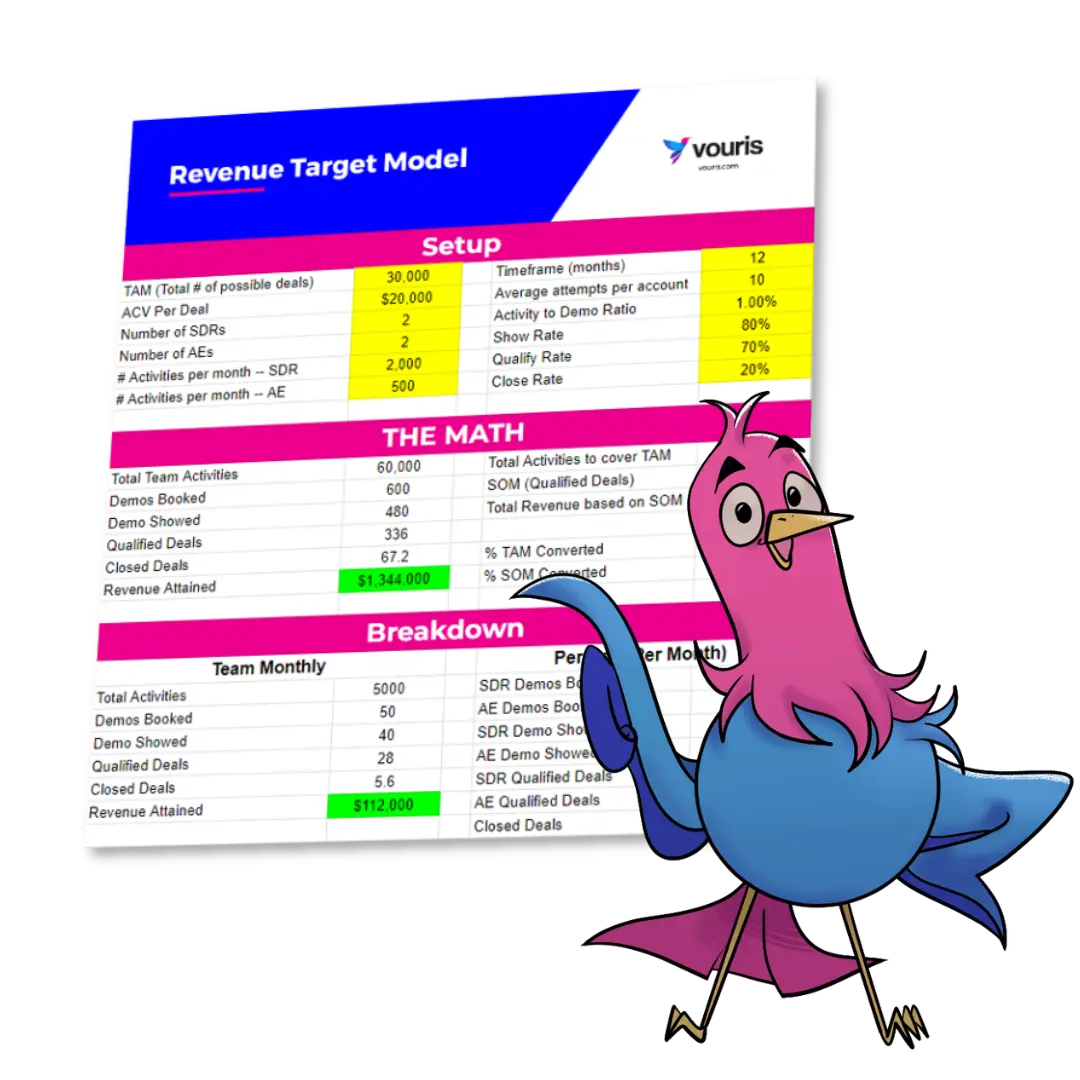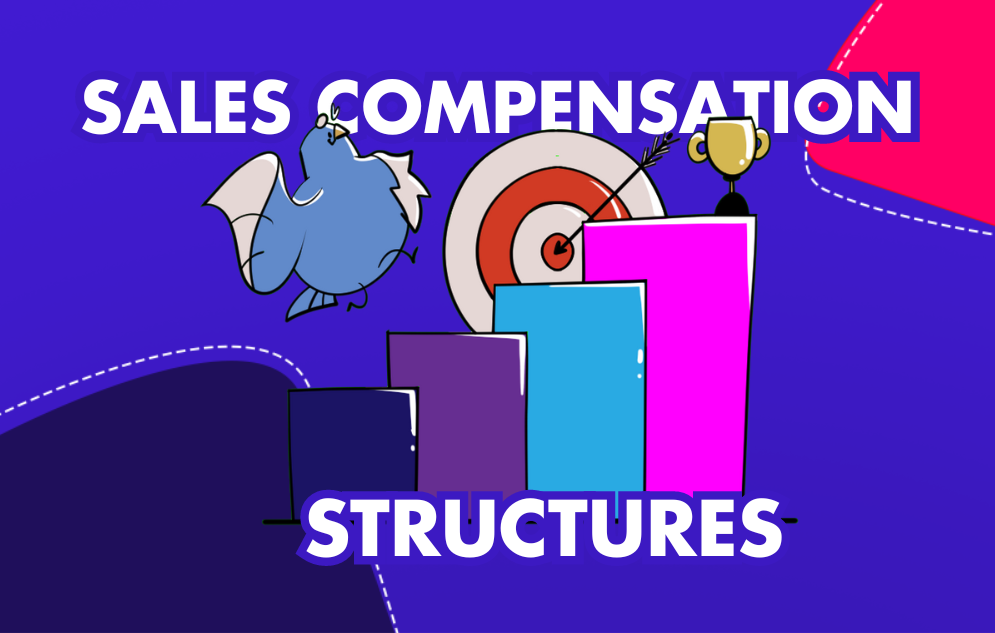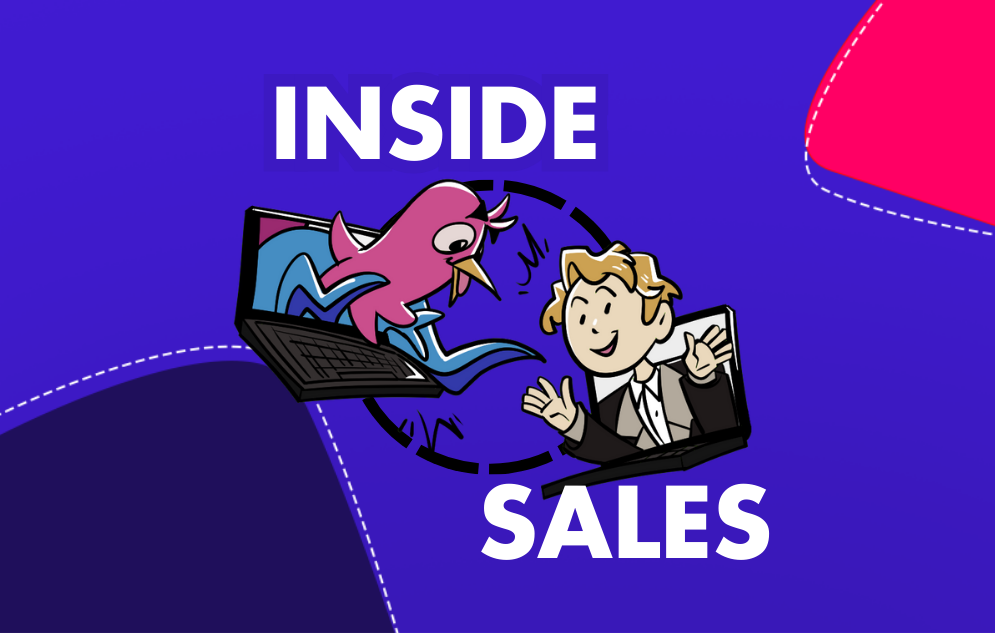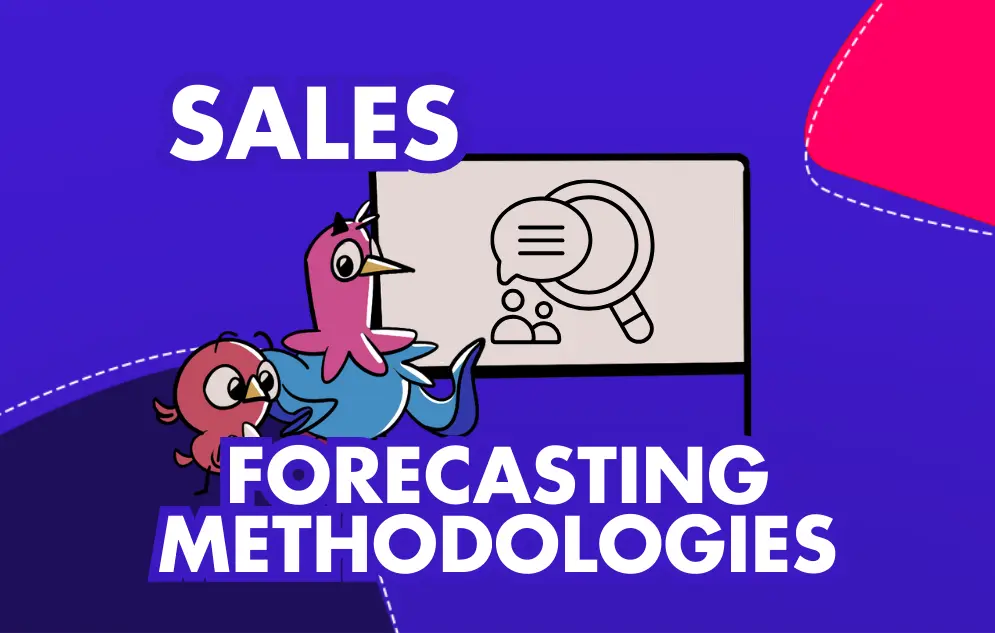Are you struggling to achieve hyper growth for your startup?
To achieve hyper growth, it is crucial to have an effective sales strategy in place.
In this article, we will unveil the secrets of an effective sales strategy and provide you with examples, templates, and best practices to help you master the art of selling.
Sales Strategy

A sales strategy is a plan of action designed to achieve sales goals and drive sales growth. It involves identifying target markets, understanding customer needs, and developing tactics to reach and persuade potential customers. A well-executed sales strategy can help businesses increase revenue, expand their customer base, and stay ahead of the competition.
Successful startups have implemented various sales strategies to achieve their goals. For example, Airbnb used a referral program to incentivize users to invite their friends, resulting in rapid user growth. Another example is Dropbox, which offered a freemium model to attract users and then converted them into paying customers through upselling and cross-selling.
Sales Strategy Examples
To give you some examples of successful sales strategies implemented by startups, let's start with the first one. One effective strategy is to focus on building strong relationships with potential customers. For instance, a software startup may offer free trials or demos to allow customers to experience the product firsthand and build trust. This approach helps to establish credibility and can lead to long-term customer loyalty.
Another successful sales strategy is to leverage social media platforms to reach a wider audience. Startups can create engaging content and share it on platforms like Instagram, Facebook, or LinkedIn. By utilizing targeted ads and engaging with potential customers through comments and direct messages, startups can generate leads and convert them into sales.
Lastly, a startup can implement a referral program as part of their sales strategy. By offering incentives or rewards to existing customers who refer new customers, startups can tap into their existing customer base to expand their reach. This strategy not only helps to acquire new customers but also encourages customer advocacy and word-of-mouth marketing.
Overall, these examples demonstrate the importance of building relationships, leveraging social media, and implementing referral programs as effective sales strategies for startups.
Sales Plan Template

A sales plan is a document that outlines the goals, strategies, and tactics a company will use to achieve its sales objectives. It serves as a roadmap for the sales team, providing guidance on how to reach target customers, generate leads, and close deals. A well-developed sales plan can help businesses align their sales efforts with their overall business objectives and maximize their sales potential.
Building a sales strategy plan involves several key components. First, it is important to conduct a target market analysis to identify the ideal customer profile and understand their needs and preferences. Next, sales goals should be set, including revenue targets, customer acquisition targets, and sales conversion rates. Sales tactics, such as cold calling, email marketing, or social selling, should be determined based on the target market and the company's resources. Finally, the sales team structure should be established, including roles and responsibilities, training and development plans, and performance metrics.
Building a Sales Strategy Plan
Building a Sales Strategy Plan
To build an effective sales strategy plan, you need to start by conducting a thorough target market analysis. This involves identifying your ideal customers, understanding their needs and preferences, and determining how your product or service can meet those needs.
Next, you should set clear sales goals that are specific, measurable, attainable, relevant, and time-bound (SMART). These goals will serve as a roadmap for your sales team and help them stay focused and motivated.
Once you have your goals in place, it's important to develop sales tactics that align with your target market and goals. This may include strategies for lead generation, customer acquisition, and customer retention.
Lastly, you need to establish a strong sales team structure. This involves defining roles and responsibilities, providing training and support, and implementing effective communication channels. A well-structured sales team will be able to execute your sales strategy plan effectively and drive results.
Inbound vs. Outbound Sales

Inbound sales and outbound sales are two different approaches to selling products or services. Inbound sales focuses on attracting and engaging potential customers through content marketing, social media, and search engine optimization. It aims to create a positive customer experience and build trust, allowing customers to come to the business on their own terms. Outbound sales, on the other hand, involves proactively reaching out to potential customers through cold calling, email campaigns, or direct mail. It aims to generate leads and initiate customer conversations.
There are different types of sales strategies that businesses can choose from, depending on their business model and target market. Inbound sales strategies are suitable for businesses with a strong online presence and a customer-centric approach. Outbound sales strategies, on the other hand, are more suitable for businesses that need to actively reach out to potential customers, such as B2B companies or those targeting a specific niche market.
Types of Sales Strategies
When it comes to sales strategies, there are different approaches that businesses can take. One common type is inbound sales, which focuses on attracting and engaging potential customers through content marketing, social media, and search engine optimization. This strategy is particularly effective for businesses with a strong online presence and a target market that actively seeks out information and solutions.
On the other hand, outbound sales involves reaching out to potential customers through cold calling, email campaigns, and direct mail. This strategy can be more effective for businesses with a smaller target market or a product or service that requires a more personal touch. Outbound sales can also be useful for businesses that are just starting out and need to generate leads quickly.
Another type of sales strategy is a hybrid approach that combines elements of both inbound and outbound sales. This strategy allows businesses to take advantage of the benefits of both approaches and tailor their sales efforts to their specific target market and business model. By understanding the different types of sales strategies and their suitability for different situations, businesses can develop a sales strategy that maximizes their chances of success.
Sales Challenges

Startups often face challenges when it comes to sales. These challenges can include a lack of brand recognition, limited resources, and a competitive market. However, with the right strategies and tactics, startups can overcome these challenges and achieve sales success.
One approach to addressing these challenges is outcome-based selling. This approach focuses on understanding the buyer's pain points and providing solutions that deliver measurable results. By focusing on the outcomes that the buyer wants to achieve, startups can differentiate themselves from the competition and build trust with potential customers. Outcome-based selling also addresses the buyer's pain point of lacking transparency in the sales process, as it provides clear expectations and measurable results.
Outcome-Based Selling
Are you tired of dealing with salespeople who only focus on selling their product without considering your needs? Outcome-based selling is the solution you've been looking for. By shifting the focus from the product to the desired outcome, this sales strategy ensures that your pain points are addressed effectively.
In outcome-based selling, the salesperson takes the time to understand your specific pain points and goals. They then tailor their approach to provide a solution that aligns with your desired outcome. This approach eliminates the frustration of dealing with salespeople who only care about making a sale, as it puts your needs at the forefront of the sales process.
Transparency is a common pain point in the sales process. With outcome-based selling, the salesperson provides clear and transparent information about how their product or service can help you achieve your desired outcome. This eliminates any confusion or uncertainty and allows you to make an informed decision. By focusing on the outcome, the salesperson ensures that you have a clear understanding of what you can expect and how their solution will address your pain points.
Sales Trends

The sales industry is constantly evolving, and startups need to stay up to date with the latest trends to remain competitive. One of the current trends in sales is social selling. Social selling involves using social media platforms, such as LinkedIn, Twitter, or Facebook, to engage with potential customers, build relationships, and generate leads. It allows startups to leverage the power of social networks to reach a wider audience and establish credibility.
Social selling is particularly important in today's digital age, where buyers are increasingly using social media to research products and services before making a purchase. By using social selling techniques, startups can position themselves as industry experts, provide valuable content, and engage with potential customers in a more personalized and meaningful way.
Social Selling
Social selling has become increasingly important in today's digital age. It allows sales professionals to leverage social media platforms to connect with potential customers and build relationships. By using platforms such as LinkedIn, Twitter, and Facebook, salespeople can engage with prospects on a more personal level and establish trust.
One of the main benefits of social selling is that it allows sales professionals to reach a larger audience. With billions of people using social media, it provides a vast pool of potential customers to connect with. By sharing valuable content, participating in discussions, and providing insights, salespeople can position themselves as industry experts and attract potential buyers.
In addition to reaching a larger audience, social selling also allows sales professionals to gather valuable insights about their prospects. By monitoring their social media activity, salespeople can gain a better understanding of their interests, preferences, and pain points. This information can then be used to tailor their sales pitch and offer personalized solutions to their prospects. Overall, social selling is an effective strategy for building relationships, reaching a wider audience, and gathering valuable insights to drive sales success in today's digital age.
Sales Process

A typical sales process consists of several stages, each with its own objectives and activities. The stages of a sales process may include prospecting, qualifying leads, making a sales pitch, handling objections, and closing deals. Following a structured sales process can help startups streamline their sales efforts, improve efficiency, and increase the chances of success.
In each stage of the sales process, there are best practices that startups can follow to maximize their sales potential. For example, in the prospecting stage, startups can use various techniques, such as cold calling, email marketing, or networking events, to identify potential customers. In the qualifying stage, startups can use qualification criteria, such as budget, authority, need, and timeline, to determine if a lead is worth pursuing. In the sales pitch stage, startups can focus on the unique value proposition and benefits of their product or service to persuade potential customers. Handling objections involves addressing any concerns or doubts that potential customers may have, while closing deals involves finalizing the terms and conditions and getting the customer's commitment.
By following these best practices at each stage of the sales process, startups can increase their chances of success and achieve their sales goals.
Sales Process Best Practices
Sales Process Best Practices
Prospecting: To effectively prospect, make sure to research and identify potential leads that align with your target audience. Use various channels such as social media, networking events, and referrals to reach out to these leads. Personalize your approach and focus on building relationships rather than just making a sale.
Qualifying leads: Take the time to qualify leads by asking the right questions and understanding their needs and pain points. This will help you determine if they are a good fit for your product or service. Focus on quality over quantity and prioritize leads that have a higher likelihood of converting into customers.
Making a sales pitch: When making a sales pitch, be clear, concise, and focused on the value proposition of your product or service. Tailor your pitch to address the specific needs and challenges of the prospect. Use storytelling and visuals to engage the prospect and make your pitch memorable.
Handling objections: Anticipate and address objections before they arise by understanding common objections and preparing responses. Listen actively to the prospect's concerns and empathize with their point of view. Provide relevant examples and case studies to demonstrate how your product or service can overcome their objections.
Closing deals: When closing a deal, be confident and assertive. Clearly outline the next steps and any incentives or discounts that may be available. Create a sense of urgency by highlighting the benefits of taking action now. Follow up promptly and consistently to ensure a smooth transition from prospect to customer.
Conclusion
In conclusion, having an effective sales strategy is crucial for startups to succeed in the competitive business world. It allows them to identify and target their ideal customers, differentiate themselves from competitors, and ultimately drive revenue growth.
To maximize sales effectiveness, startups should carefully plan and execute their sales strategy, taking into consideration their unique value proposition, target market, and sales goals. They should also stay updated on the latest sales trends and adapt their strategies accordingly to stay ahead of the competition.
By mastering the art of selling and implementing a well-crafted sales strategy, startups can increase their chances of success, build strong customer relationships, and achieve long-term business growth.
{{download-all}}


.webp)
.webp)
.png)
.webp)






.webp)

.webp)
.webp)
.webp)

.webp)

.webp)
.webp)
.png)
.png)




.png)






.webp)


